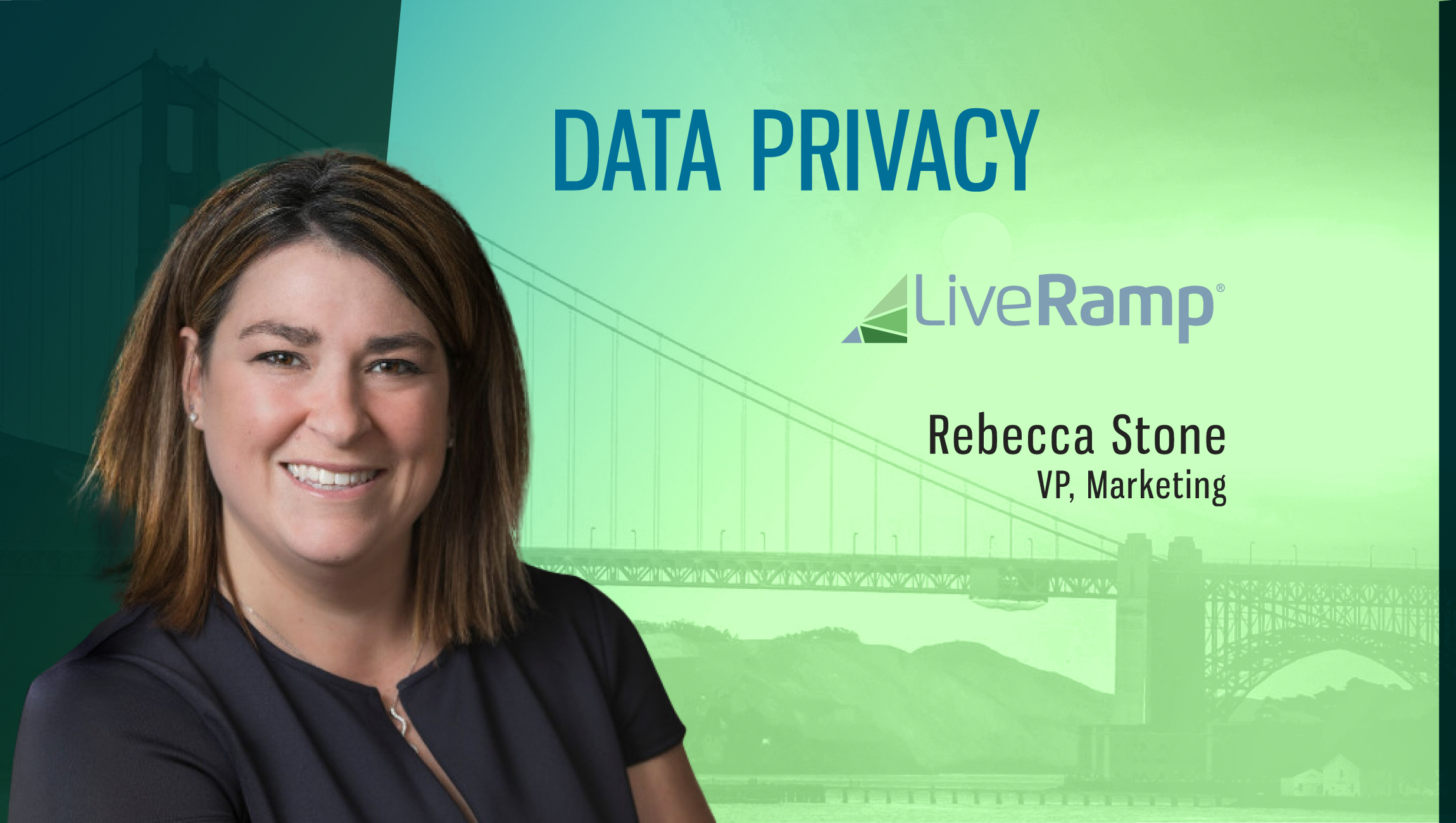Rebecca Stone
Vice President, Marketing, LiveRamp
LiveRamp’s presentation at Ad Week focused on the new Data Transparency Label. In this context, we spoke to Rebecca Stone, Vice President, Marketing, LiveRamp, to understand the goal of the project and their position on data privacy.
Html code here! Replace this with any non empty text and that's it.
Your presentation at Ad Week focused on the new Data Transparency Label. What is the goal of this project?
In the current landscape, there aren’t enough tools available that enable marketers to see “what’s inside” the data segments they buy. This is important because data buyers spend millions of dollars on audience segments, but often times they’re going in blind. The Data Transparency Label is designed to solve this issue. Modeled after the FDA’s food nutrition label, the DMA, IAB Tech Lab, Coalition for Innovative Media Measurement (CIMM) and the Advertising Research Foundation (ARF) created the Data Transparency Label to disclose the source, collection, segmentation criteria, recency and cleansing specifics of data that marketers are buying — something critically important in an era where consumer privacy and data ethics are top of mind. Our session focused on this breakthrough standard and the impact it will have on data quality, transparency, and integrity.
Was this discussion about privacy mirrored in other presentations and conversations at the conference?
There is widespread agreement that there needs to be more trust and transparency built into the overall ad network infrastructure. This was especially apparent in discussions about the increasing number of rules and regulations in our industry and why they’re being enacted. A lot of times people don’t understand how their data is being used, and because of recent scandals, trust and transparency have emerged as some of the most important guidelines marketers should live by.
This doesn’t just go for the AdTech ecosystem either. A recent study by Clear found that consumers are noticing an “experience gap” with brands, and it’s resulting in monetary losses. All brands need to evaluate their relationship with customers in terms of how they’re communicating data use, information privacy, and security in a way that’s relatable and understandable.
What is LiveRamp’s position on data privacy?
LiveRamp is the identity platform that powers exceptional experiences. We’re committed to privacy, transparency and data ethics. Data ethics goes beyond what’s required by law and addresses the gap between what companies can do and what they should do. We view ourselves at the center of this conversation by serving as an independent platform that connects the entire ecosystem. And we do this in a way that respects privacy and is compliant with all applicable data protection laws. We also have full visibility into how data is being used across the spectrum.
Beyond just LiveRamp, the industry as a whole is seeking innovation that delivers on the promise of privacy and consent. But the data ecosystem is extremely fragmented, making it difficult to ensure all members of a data supply chain have the most current consents. This fragmentation of the consumer experience has implications beyond privacy too. Fragmentation of the consumer experience across digital and physical environments limits innovation overall. We see identity resolution — the ability to connect people, data, and devices — as the key to eliminating fragmentation and creating better, more personalized experiences.
As an organization that works with so many partners in the space, we recently helped to develop a blockchain-based protocol, called PrivacyChain, which allows companies to track users’ privacy consents across the complex data supply chains. We donated the code to the IAB Tech Lab, which is working to standardize this process. PrivacyChain is currently under review for public comment and available to test through specifications and reference implementation.
What other trends did you see at Ad Week?
Consumer centricity was a common theme. This has been a trend for a while, but it’s becoming even more important as consumers are connecting to other consumers, brands, etc., through a growing number of devices and touchpoints. We’re also adapting to heightened consumer expectations and the increasing demand for personalized experiences across touchpoints. It’s not about just targeting your customer in a specific channel or platform. It’s about being thoughtful in how we create a personalized, omnichannel experience that meets their needs.
Looking at the next 365 days, what other developments were highlighted during Ad Week that you expect to be a driving force in the industry?
As expected, blockchain technology. We’re excited to be a part of this conversation with the release of PrivacyChain with the IAB Tech Lab. There was a session during the show about overcoming fears and embracing new technologies even if an organization doesn’t know how to use it. I think that sentiment of bravery will transpire outside of the show’s walls. Another session that stood out to me was about the convergence of data and creative. It’s expected that chief digital officers and chief creative officers will work more closely together and use data to drive business decisions now and in the future.
Thanks for chatting with us, Rebecca.
Stay tuned for more insights on marketing technologies. To participate in our Tech Bytes program, email us at news@martechseries-67ee47.ingress-bonde.easywp.com



